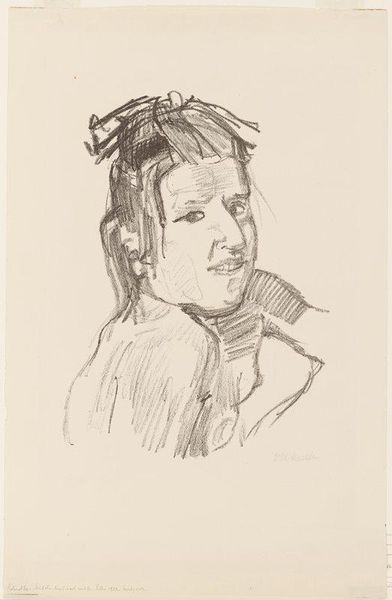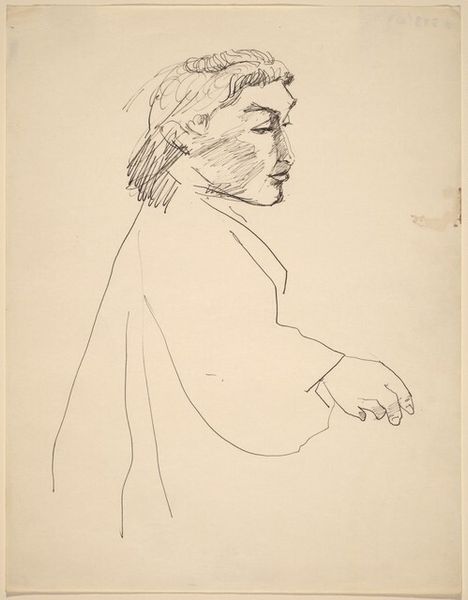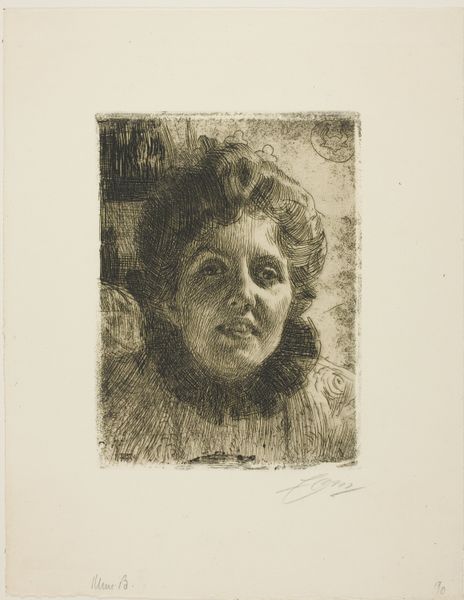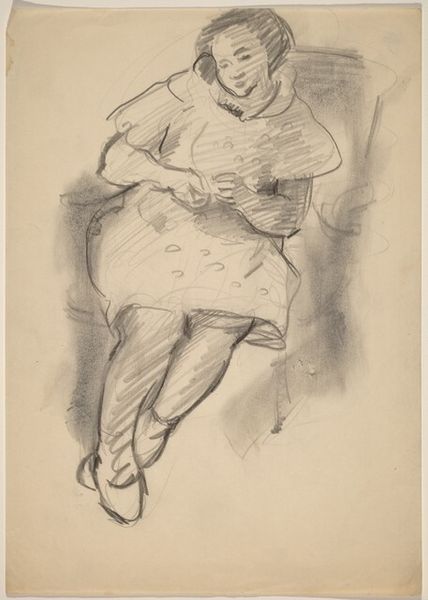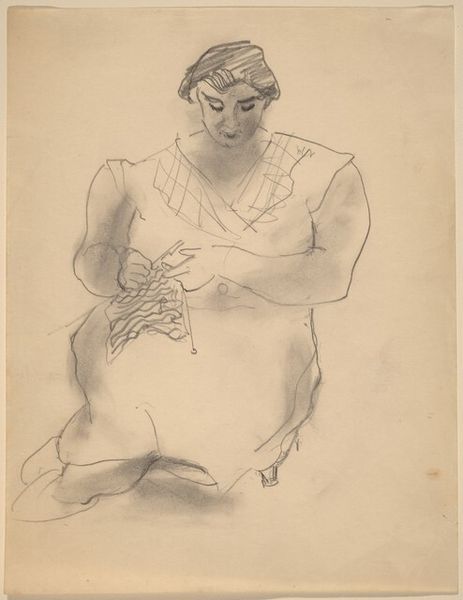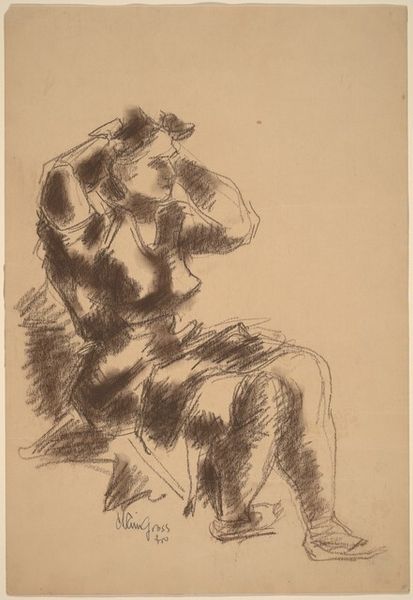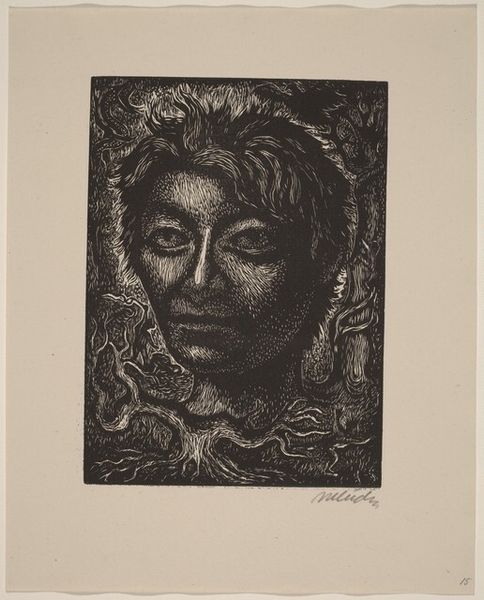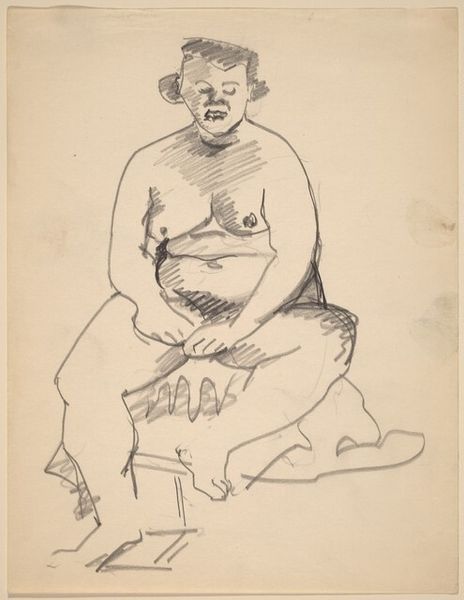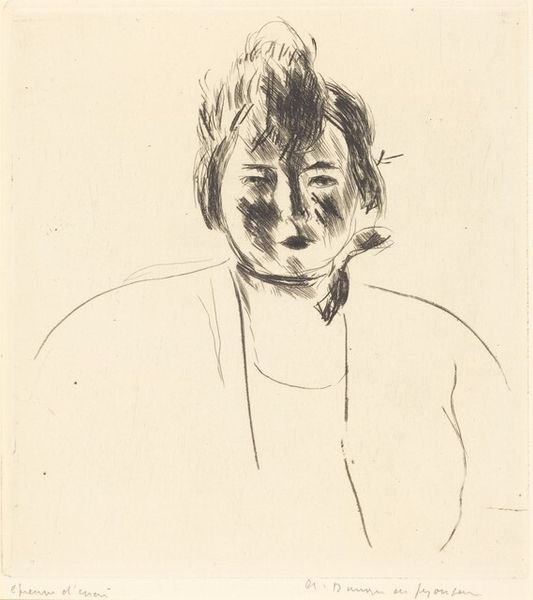
print, etching, drypoint
#
portrait
#
art-deco
#
new-objectivity
# print
#
etching
#
expressionism
#
drypoint
Dimensions: 13 5/8 x 11 in. (34.61 x 27.94 cm) (plate)19 11/16 × 16 7/16 in. (50.01 × 41.75 cm) (sheet)
Copyright: No Copyright - United States
Curator: Editor: We’re looking at Otto Dix's "Dame" from 1922, a print made with etching and drypoint. The starkness of the lines, combined with the somewhat grotesque features, creates a rather unsettling feeling. What stands out to you? Curator: I notice how the labor-intensive techniques of etching and drypoint contribute to the portrayal of this woman. The lines are meticulously placed, suggesting a deliberate, almost clinical examination of the subject. How might the means of production – the sharp burin cutting into the metal, the acid biting the plate – influence our understanding of this "Dame?" Editor: That’s interesting. I hadn't considered the actual process that much. Are you saying the choice of printmaking is critical? Curator: Absolutely. Consider the social context of the Weimar Republic, riddled with economic hardship and social upheaval. The print medium allows for multiples, making it accessible to a wider audience. Could Dix be using this accessibility to critique the opulence and decadence of a particular class? How does her adornment relate to that? Editor: So the pearls, the elaborate headpiece…they're not just decoration, but symbols of that excess? Is Dix making a statement about wealth and consumption? Curator: Precisely. Think about the materials: the metal plate, the acid, the ink, the paper. All these elements come together through labor to create an image that challenges conventional notions of beauty and status. How does the materiality of the artwork shape our perception of the subject, particularly in the context of post-war Germany? Editor: I see! It’s not just a portrait of a woman, but a commentary on the society she inhabits, made possible by the specific artistic choices. Curator: Indeed. The material processes, the social climate, and the artist's critical gaze all coalesce in this unsettling yet compelling image. We learn how printmaking is more than just reproduction; it is a powerful vehicle for social critique. Editor: Thank you, I see that the technique is integral to interpreting the message, more than I realized at first!
Comments
No comments
Be the first to comment and join the conversation on the ultimate creative platform.
